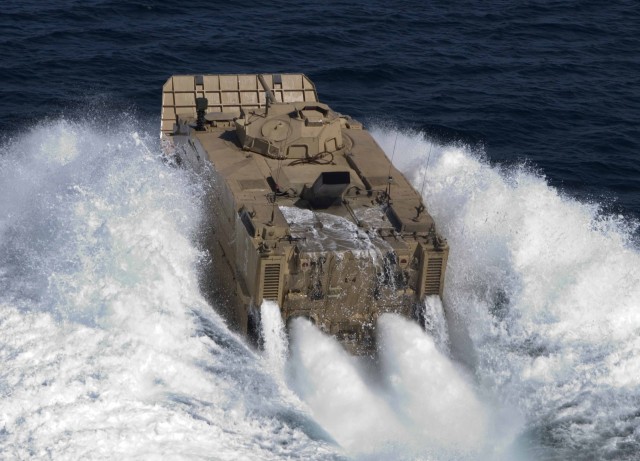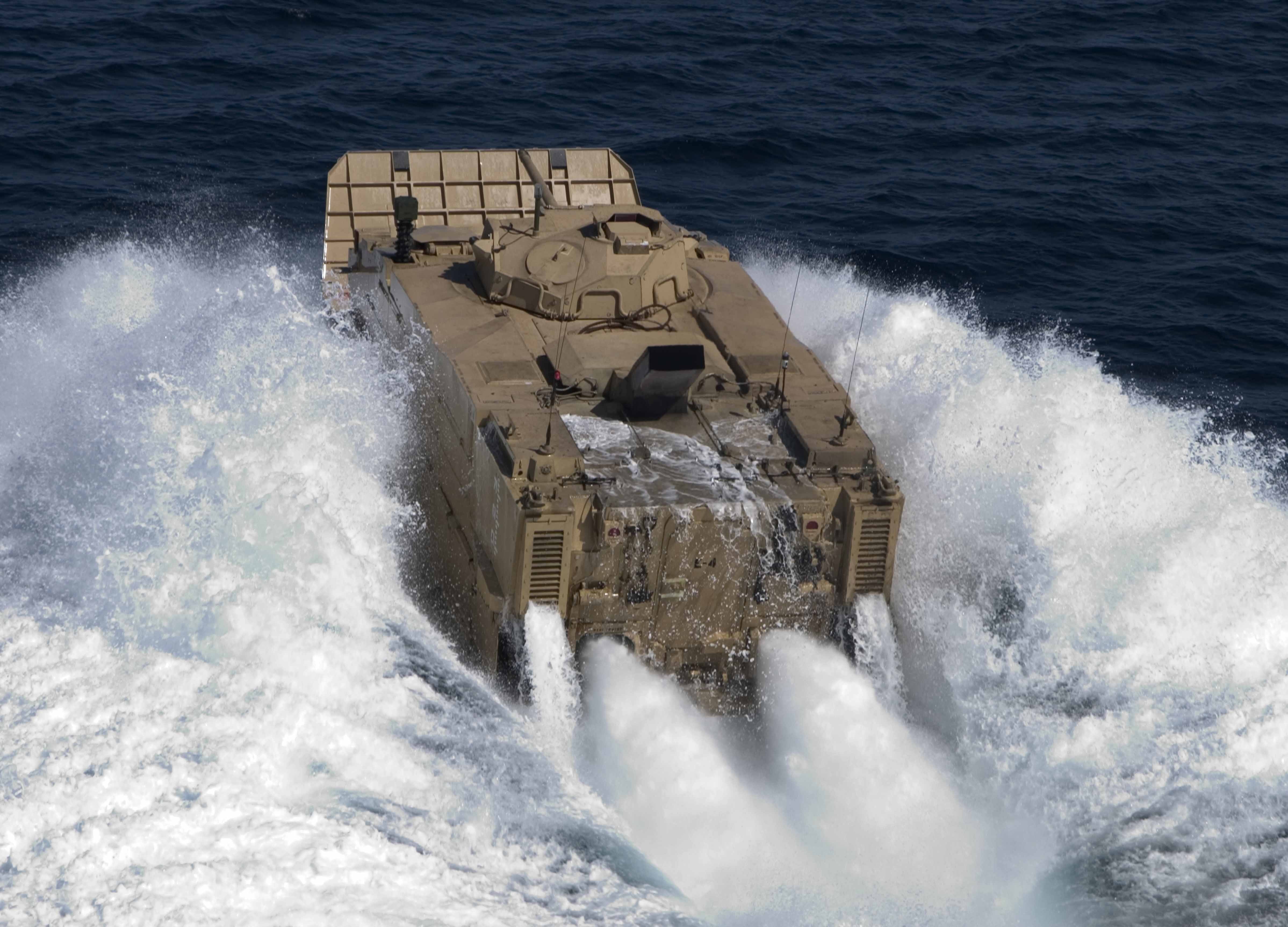U.S. Army Research Laboratory ballistics and lethality engineers recently completed testing of high-power water jets that propel the U.S. Marine Corps' Expeditionary Fighting Vehicle. The tests mark a critical step in readying the highly-complex amphibious assault vehicle for its 2014 full-up, system-level live fire test and evaluation.
The EFV is the primary means of tactical mobility for the Marine Corps Reinforced Rifle Squad, transporting combat-loaded Marines from ship to shore and onward objectives during the conduct of amphibious operations and subsequent ground combat operations. According to the Marine Corps, it is an armored amphibious vehicle capable of seamlessly transporting Marines from Naval ships located beyond the visual horizon to inland objectives.
Once fielded, the EFV will have the speed and maneuvering capabilities to operate with main battle tanks on land. It will also navigate oceans, lakes and rivers as avenues of approach and maneuver. The fully-tracked infantry combat vehicle is operated and maintained by a crew of three and carries 17 combat-loaded Marines. The EFV will replace the Amphibious Assault Vehicle, which was procured in 1972 and will be more than 40 years old when the EFV is fielded.
ARL engineers spent six months researching and testing vulnerability to ballistic impact and penetration. After initial research and examination of high-power water jets, the team identified failure modes and damage mechanisms that could result in their dysfunction, said Brent T. Mills, a mechanical engineer within ARL's Survivability/Lethality Analysis Directorate, System Engineering and Experimentation Branch.
"Using multiple threats, ARL conducted 40 penetration tests on HPWJ subsystems to measure the damage to components," said Mills. "Using this data and failure analyses, ARL categorized the results into three conditions: no damage, reduced performance, or catastrophic failure.
"With further analysis, ARL derived the probabilities of damage given various hits to the HPWJ, which are an essential input to ballistic vulnerability models," Mills added.
Earlier this summer, ARL delivered to the EFV Program Office a list of potential design changes to improve survivability. With this input from ARL, the program's Live Fire Test and Evaluation Integrated Product Team can now select relevant shot lines to further understand the HPWJs' vulnerability and the residual capability they can provide when damaged, Mills explained.
ARL will provide a final report to the IPT, which is chaired by the Program Manager, Advanced Amphibious Assault.
"Our work allows us to identify potential system/sub-system vulnerabilities of the vehicle at a relatively early phase of the design so that vulnerability reduction measures can be taken and/or incorporated into the design of the vehicle to make it more survivable," Mills noted.


Social Sharing